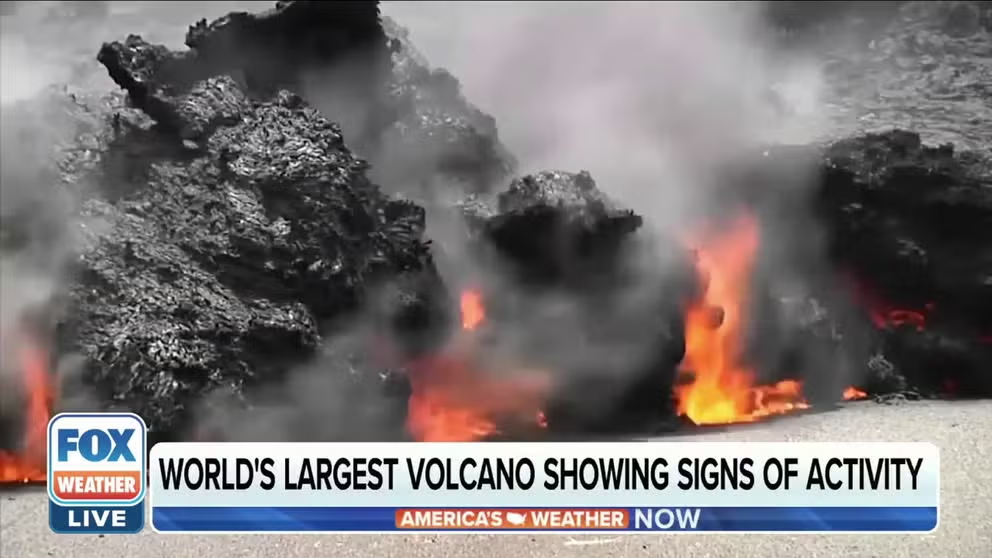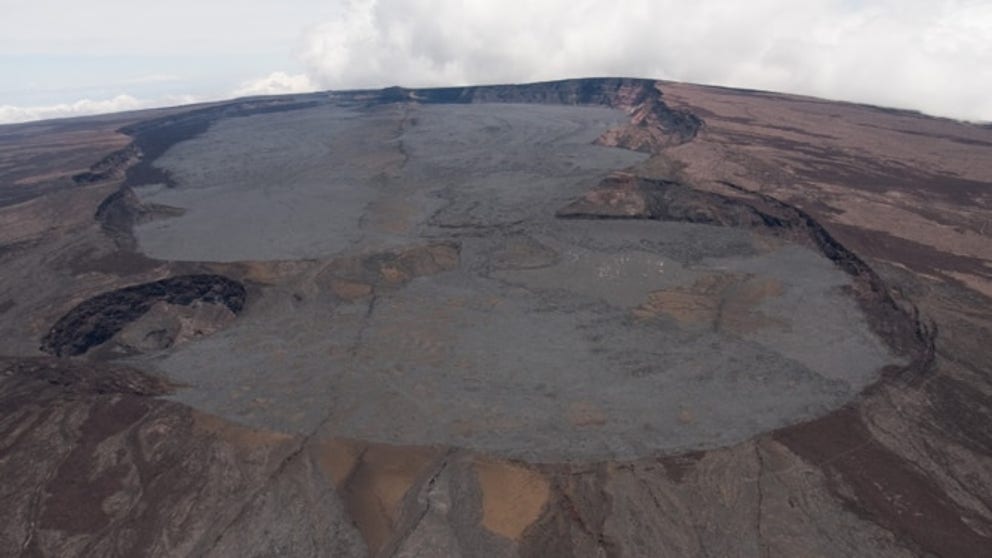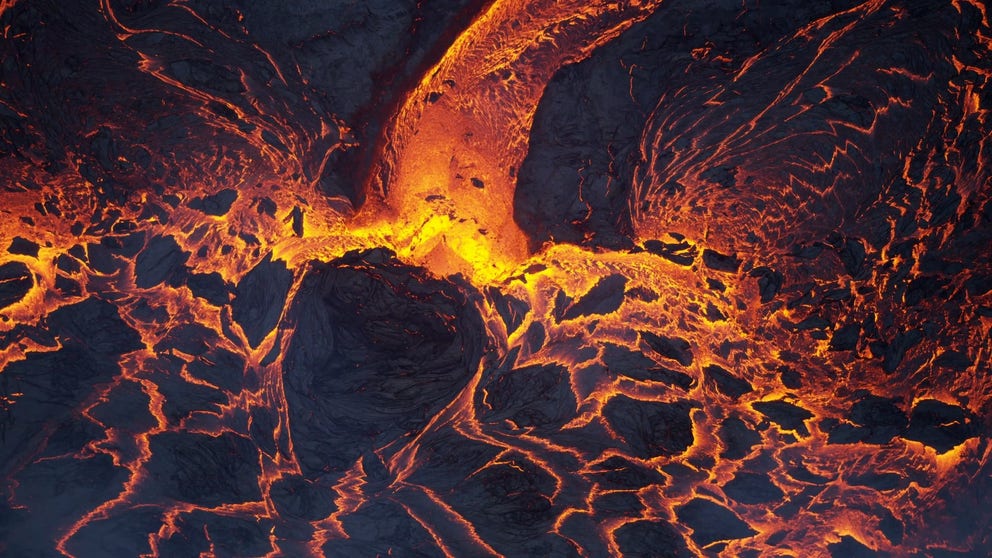World's largest volcano showing signs of increased activity on Hawaii's Big Island
The enormous volcano covers over half of Hawaii's Big Island, and recent seismic activity has caused the United States Geological Survey to release daily reports on the mountain’s status.
Seismic activity at world's largest volcano cause for concern: Geologist
Geologist Matthew Patrick weighs in on the state of unrest at Mauna Loa and discusses how an eruption would impact Hawaii.
An uptick in activity by the world’s largest volcano has residents on Hawaii’s Big Island seeking answers as to what the future holds for Mauna Loa.
The enormous volcano covers over half the island, and recent seismic activity has caused the United States Geological Survey to release daily reports on the mountain’s status.
Agencies, including the region’s civil defense and the Hawaiian Volcano Observatory, have held public meetings encouraging residents to be prepared for if the volcano erupts.
The last eruption of Mauna Loa occurred in 1984 and lasted nearly a month as lava flowed towards Hilo.
The USGS said the flow resulted in the destruction of utility lines but stopped short by more than a mile from impacting the outskirts of the city.
The volcano is currently under a yellow advisory, which means it is exhibiting signs of elevated unrest compared to normal.
WATCH A VOLCANO ERUPT OUTSIDE OF ICELAND’S CAPITAL
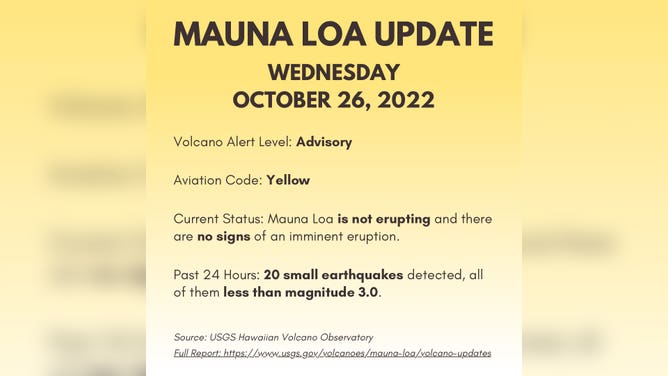
Mauna Loa Volcano Status
(Hawaii Emegerbcny Management)
"Mauna Loa continues to be in a state of heightened unrest as indicated by increased earthquake activity and inflation of the summit. The current unrest is most likely being driven by renewed input of magma 2–5 miles beneath Mauna Loa’s summit," the USGS wrote.
Volcanologists said despite the uptick in quakes, there are no signs of an imminent eruption, but residents need to be prepared for an event with little warning.
The island is made up of nine lava zones, with Lava Flow Zone 1 being at the highest risk from an eruption and Lava Flow Zone 9 having the least potential impacts from any of the island’s five major volcanoes.
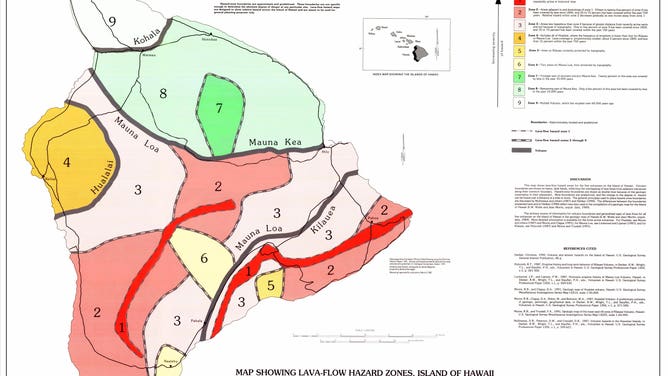
USGS Lava Flow Zones
The USGS said during past events, authorities have issued alerts to give residents a better sense of the event's timing.
Due to Mauna Loa’s composition, local experts said lava can move fast and impact communities on the east and west sides of the island.
"The impacts will depend on the size of the potential eruption and how much gas is being released. In 2018 eruption of Kīlauea, which was a really large eruption, produced gases that impacted other areas in Hawaii and other islands in the Pacific," said Katie Mulliken, a USGS Geologist.
WEST COAST SEES TSUNAMI WAVES AFTER MASSIVE VOLCANIC ERUPTION
How to prepare for a volcanic eruption
The Centers for Disease Control and Prevention suggests having plans for sheltering and evacuating from the impact zone of a volcano.
Local authorities will help residents determine the safest option to ensure minimal risks and save lives.
Mauna Loa Volcano timelapse
The world’s largest volcano is becoming more active. Timelapse video from Wednesday.
Whether you are sheltering in place or are told to evacuate, be sure to have a one-week supply of prescription medication, your vehicle’s gas tank is full and turn off utilities to the house to prevent problems when services are restored.
Volcanoes spew deadly gases, ash and lava, and local emergency services have already likely prepared evacuation routes to follow to avoid the dangers.
For some residents, it may be safer to shelter in place than to venture out seeking refuge.
If advised by authorities to shelter in place, suggested tips include:
- Close and lock all windows and outside doors
- Turn off air conditioning systems and fans
- Stay in an interior room at the highest level
See live webcam images from Mauna Loa: Click here
Watch lava flow in these mesmerizing volcanic eruptions around the world
Experience the power and majesty of a volcano up close in this awe-inspiring video.
